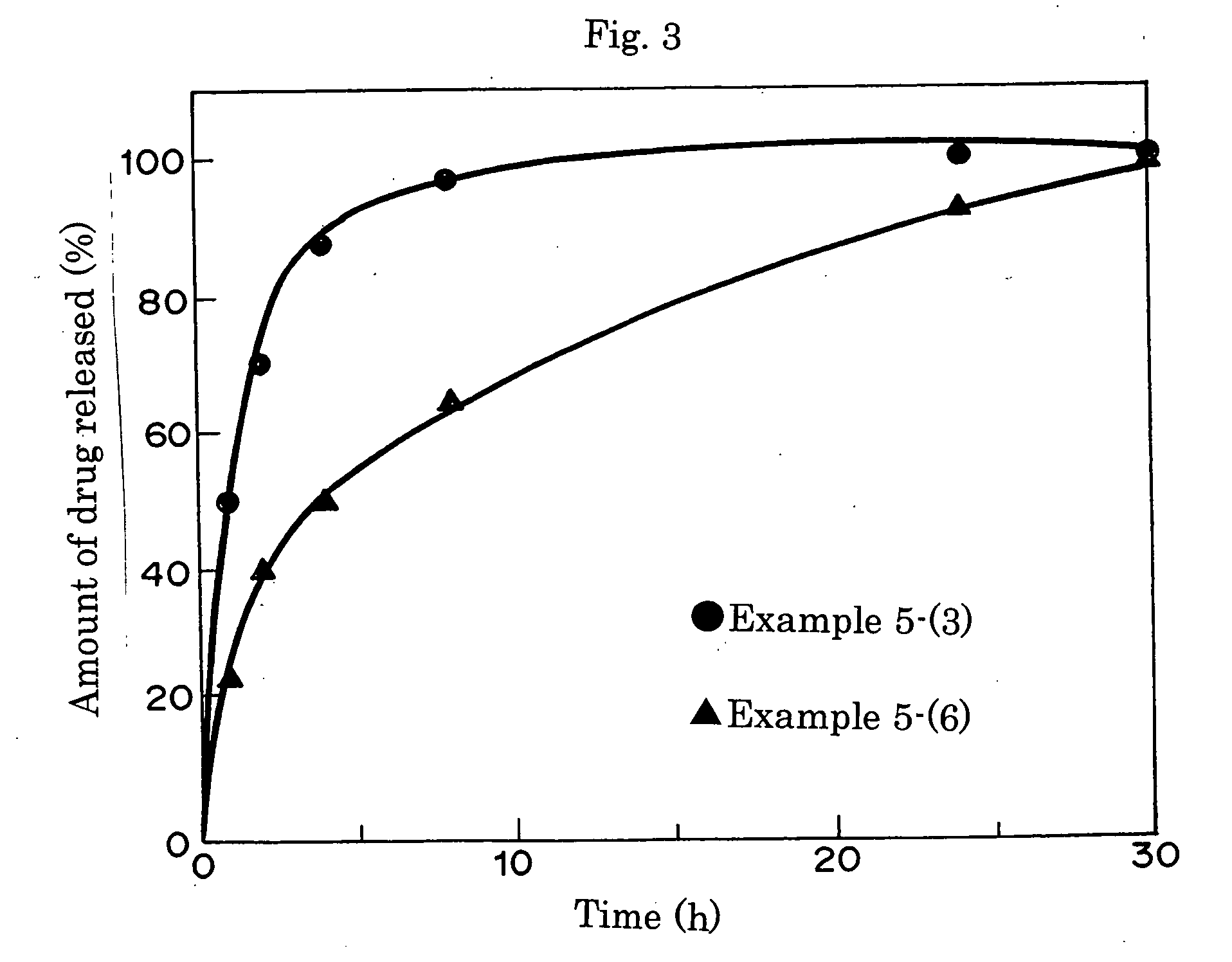Ophthalmic lenses capable of sustained drug release and preservative solutions therefor
a technology of ophthalmic lenses and storing solutions, which is applied in the field of ophthalmic lenses capable of sustained drug release and storing solutions, can solve the problems of hardly achieving the form stability essential as the ophthalmic lens, failing to achieve effective drug releasability, and eye irritation and cloudy views
- Summary
- Abstract
- Description
- Claims
- Application Information
AI Technical Summary
Benefits of technology
Problems solved by technology
Method used
Image
Examples
example 1
[0058] According to the following method, the effective amount of methacrylamide (MAm) added was confirmed from the amount of a drug included and tensile elongation.
[0059] MAm was added to a concentration of 0%, 0.05%, 0.1%, 1%, 15%, 30%, or 40% to a mixture consisting of 94.8 wt % 2-hydroxyethyl methacrylate (HEMA), 5 wt % methacryloxyethyl phosphate (structural formula (I): m=2) (MOEP), 0.2 wt % ethylene glycol dimethacrylate (EDMA), and 2000 ppm AIBN, and each mixture was stirred for about 1 hour in a nitrogen atmosphere. The mixture to which 0% MAm was added was a comparative example. After stirring, each monomer mixture was introduced into a mold for ophthalmic lens and heated over 25 hours to a temperature in the range of 50 to 100° C. to give a polymer. The resulting polymer was returned to room temperature, then removed from the mold and immersed in distilled water at about 80° C. for about 4 hours, whereby it was swollen by hydration. Any ophthalmic lens thus obtained was ...
example 2
[0061] By the following method, the behavior of inclusion of a drug was confirmed.
[0062] HEMA, MOEP (structural formula (I): m=2), MAm, EDMA, and 2000 ppm AIBN were mixed in a proportion shown in Table 2, and each mixture was stirred for about 1 hour in a nitrogen atmosphere, and from each mixture, an ophthalmic lens was obtained in the same manner as in Example 1. According to Example 1, naphazoline nitrate was included as a drug model in the resulting ophthalmic lens. According to Example 1, the amount of the drug included therein was quantified. Example 2-(2) was a comparative example.
[0063] The sustained drug release curves are shown in FIG. 1. The result indicated that the release rate of the MAm-containing ophthalmic lens in Example 2-(1) was lower than in Example 2-(2). That is, it can be confirmed that excellent drug retention performance and highly efficient sustained drug release performance can be achieved by incorporating nitrogen atoms into the ophthalmic lens.
[0064]...
example 3
[0065] Measurement results of the size of each ophthalmic lens in physiological saline before and after drug release in Examples 2-(1), (2), (3) are shown in Table 2. It was recognized that like the ophthalmic lens in Example 2-(1), the ophthalmic lens in Example 2-(3) was excellent in form stability with less change in size, while the MAm-free lens in Example 2-(2) showed a significant change in size. That is, it can be confirmed that the drug delivery ophthalmic lens of the present invention is excellent in form stability even if it does not contain a crosslinking monomer.
TABLE 1MAmAmount of drug includedTensile elongationExample 1(wt %)(×10−5mol)(%)(1)07.29230(2)0.057.42230(3)0.107.41250(4)1.008.30260(5)15.09.80265(6)30.09.36270(7)40.08.20255
[0066]
TABLE 2BeforeAfterExampleHEMAMOEPMAmEDMAreleaserelease2(wt %)(wt %)(wt %)(wt %)(mm)(mm)(1)84.85100.214.014.0(2)94.85 00.214.014.5(3)85.0510014.014.1
PUM
| Property | Measurement | Unit |
|---|---|---|
| Osmotic pressure | aaaaa | aaaaa |
| Hydrophilicity | aaaaa | aaaaa |
| Stability | aaaaa | aaaaa |
Abstract
Description
Claims
Application Information
 Login to View More
Login to View More - R&D
- Intellectual Property
- Life Sciences
- Materials
- Tech Scout
- Unparalleled Data Quality
- Higher Quality Content
- 60% Fewer Hallucinations
Browse by: Latest US Patents, China's latest patents, Technical Efficacy Thesaurus, Application Domain, Technology Topic, Popular Technical Reports.
© 2025 PatSnap. All rights reserved.Legal|Privacy policy|Modern Slavery Act Transparency Statement|Sitemap|About US| Contact US: help@patsnap.com



